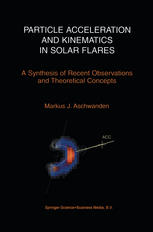

Most ebook files are in PDF format, so you can easily read them using various software such as Foxit Reader or directly on the Google Chrome browser.
Some ebook files are released by publishers in other formats such as .awz, .mobi, .epub, .fb2, etc. You may need to install specific software to read these formats on mobile/PC, such as Calibre.
Please read the tutorial at this link: https://ebookbell.com/faq
We offer FREE conversion to the popular formats you request; however, this may take some time. Therefore, right after payment, please email us, and we will try to provide the service as quickly as possible.
For some exceptional file formats or broken links (if any), please refrain from opening any disputes. Instead, email us first, and we will try to assist within a maximum of 6 hours.
EbookBell Team

4.0
26 reviewsOver the last decade we entered a new exploration phase of solar flare physics, equipped with powerful spacecraft such as Yohkoh, SoHO, and TRACE that pro vide us detail-rich and high-resolution images of solar flares in soft X-rays, hard X -rays, and extreme-ultraviolet wavelengths. Moreover, the large-area and high sensitivity detectors on the Compton GRO spacecraft recorded an unprecedented number of high-energy photons from solar flares that surpasses all detected high energy sources taken together from the rest of the universe, for which CGRO was mainly designed to explore. However, morphological descriptions of these beau tiful pictures and statistical catalogs of these huge archives of solar data would not convey us much understanding of the underlying physics, if we would not set out to quantify physical parameters from these data and would not subject these measurements to theoretical models. Historically, there has always been an unsatisfactory gap between traditional astronomy that dutifully describes the mor phology of observations, and the newer approach of astrophysics, which starts with physical concepts from first principles and analyzes astronomical data with the goal to confirm or disprove theoretical models. In this review we attempt to bridge this yawning gap and aim to present the recent developments in solar flare high-energy physics from a physical point of view, structuring the observations and analysis results according to physical processes, such as particle acceleration, propagation, energy loss, kinematics, and radiation signatures.